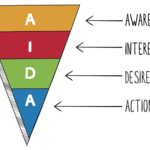In ecommerce business competition is fierce and staying ahead requires a keen eye on metrics and analytics. With businesses vying for consumer attention in every corner of the internet, success hinges on understanding and optimizing key metrics to drive growth and profitability.
As a digital marketing agency in Dubai, we recognize the critical importance of tracking these metrics to ensure our clients’ ecommerce ventures thrive. In this blog post, we’ll explore the 10 key metrics every ecommerce store should track in 2024, along with detailed insights to help you make informed decisions and propel your online business to new heights.
1. Customer Acquisition Cost (CAC):
Customer Acquisition Cost measures the average cost incurred to acquire a new customer. To calculate CAC, divide the total marketing and sales expenses by the number of customers acquired within a specific period.
CAC = Total Marketing and Sales Expenses / Number of Customers Acquired
If your digital marketing agency spent $10,000 on ads, email campaigns, and promotions in a month and acquired 100 new customers during that period, your CAC would be $100.
2. Sales Conversion Rate:
Sales Conversion Rate quantifies the percentage of visitors who make a purchase on your ecommerce store. It’s calculated by dividing the number of conversions (purchases) by the total number of visitors and then multiplying by 100.
Conversion Rate = (Conversions / Total Visitors) * 100
If your online store received 10,000 visitors in a month and had 500 conversions, your conversion rate would be 5%.
3. Average Order Value (AOV):
Average Order Value represents the average amount spent by customers in a single transaction. To calculate AOV, divide the total revenue generated by the number of orders.
AOV = Total Revenue / Number of Orders
Suppose your ecommerce store generated $50,000 in revenue from 1,000 orders in a month, your AOV would be $50.
4. Store Sessions by Traffic Source:
Understanding where your website traffic comes from is crucial for optimizing your marketing efforts. Track sessions (visits) by traffic source, such as organic search, social media, paid ads, email marketing, etc., using tools like Google Analytics.
5. Shopping Cart Abandonment Rate:
Shopping Cart Abandonment Rate reveals the percentage of users who add items to their cart but leave without completing the purchase. Calculate it by dividing the number of completed purchases by the number of initiated transactions, subtracting the result from 1, and multiplying by 100.
Abandonment Rate = ((Total Initiated Transactions – Completed Purchases) / Total Initiated Transactions) * 100
If your store had 1,000 initiated transactions and 300 completed purchases, the abandonment rate would be 70%.
6. Bounce Rate:
Bounce Rate indicates the percentage of visitors who leave your site after viewing only one page. High bounce rates can signify poor user experience or irrelevant traffic sources.
7. Returning Customer Rate:
Returning Customer Rate measures the percentage of customers who make repeat purchases. It’s calculated by dividing the number of customers who make repeat purchases by the total number of customers and multiplying by 100.
Returning Customer Rate = (Number of Returning Customers / Total Number of Customers) * 100
If you have 500 returning customers out of a total of 1,000 customers, your returning customer rate would be 50%.
8. Top Products by Units Sold:
Identify your best-selling products to understand customer preferences and optimize your product offerings and marketing strategies accordingly.
9. Click-Through Rate (CTR):
Click-Through Rate measures the percentage of people who click on a specific link or ad compared to the total number of people who view it. It’s commonly used to evaluate the effectiveness of online advertising campaigns.
Click through rate = (clicks / impressions) x 100
Suppose a search ad appears in the SERP 10,000 times in one week. And 300 people click on the ad in that week. This ad would have a CTR of 3%.
10. Refund and Return Rate:
Refund and Return Rate quantifies the percentage of orders that result in refunds or returns. Tracking this metric helps identify potential issues with product quality, customer satisfaction, or fulfillment processes.
Conclusion
By diligently tracking and analyzing these key metrics, ecommerce stores can gain invaluable insights into their performance, identify areas for improvement, and make data-driven decisions to enhance profitability and customer satisfaction. As a leading digital marketing agency in Dubai, we’re committed to helping ecommerce businesses thrive in the competitive online marketplace. Use our tips to stay ahead in the ecommerce game. You can contact us to learn how we can elevate your ecommerce strategy and drive sustainable growth. Book your free 30 minute strategy session today!





